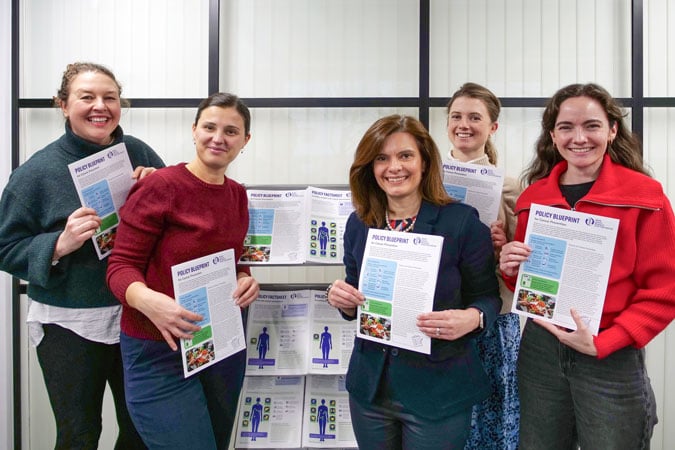Susannah Brown was Senior Science Programme Manager (Research Evidence) at World Cancer Research Fund International. She worked on the Continuous Update Project.
Our research, including our recent report on breast cancer, found that taller people are at an increased risk of 6 cancers. This includes kidney, ovarian and pancreatic cancers. The evidence is clear – but what isn’t so straightforward is why there is a link between height and cancer, and why we talk about height when we can’t change it.
You can’t change your height!
Once you have reached your final height it’s impossible to do anything about it. So why am I discussing it? Well, the increased risk seen in taller people for different cancers and in different populations suggests that a common mechanism – possibly acting in early life – might be involved. So while you cannot change someone’s final height once they’ve reached it, how tall someone grows can be influenced by the way they are nurtured and fed in the womb, and throughout the rest of their childhood and adolescent growth.
Adult height represents a growth process
It is not a person’s height itself that increases cancer risk. Instead, it is the process that your body has undergone to make you tall, that is linked to cancer.
A person’s final adult height is a visual representation of the growth process that someone’s body has undergone from conception through to adulthood. This process is influenced not only by their genes, but also by modifiable developmental factors (eg growth factors such as insulin, insulin-like growth factor, growth hormone, and sex hormones such as oestrogens) in the womb, and during childhood and adolescence. So height should be thought of only as a marker, or indicator, of the whole series of events and experiences from conception to adulthood – and it is identifying what aspects of this process influence cancer risk that is important.
What determines your height?
We know that people grow to their maximum height around the age of 20, and that how tall a person grows is influenced in part by their genes as well as the nutritional quality and quantity of the food they receive during their growth and development.
We also know that the growth of infants can be accelerated by feeding high protein formula, which in turn leads to taller adults. In addition, children who are heavier for their height (mainly due to fat) tend to grow faster and become taller (and fatter). These children also reach developmental milestones earlier.
In high-income countries – where people tend to be relatively tall and obesity rates also tend to be high – the age at which girls see their first period has fallen steadily over the last few decades from about 15 to under 11 years. All these processes are directly or indirectly the result of nutrition during development, and altered hormone levels (either hormones related to growth or to sex hormones).
These hormones influence both the visible structure of people (such as their height) and the growth and behaviour of cells within the body, so it seems likely that these are at least part of the reason that taller people are at higher risk of six cancers.
Not all bad news
Being tall is not all bad news; in fact being taller appears to be beneficial when it comes to preventing some other diseases such as diabetes, strokes and heart attacks. This is why it is so important to conduct further research that helps identify the processes that lead to these different adult health risks.
The hope is that research into hormones and other growth factors that influence height will provide a better understanding of the link between height and cancer.




